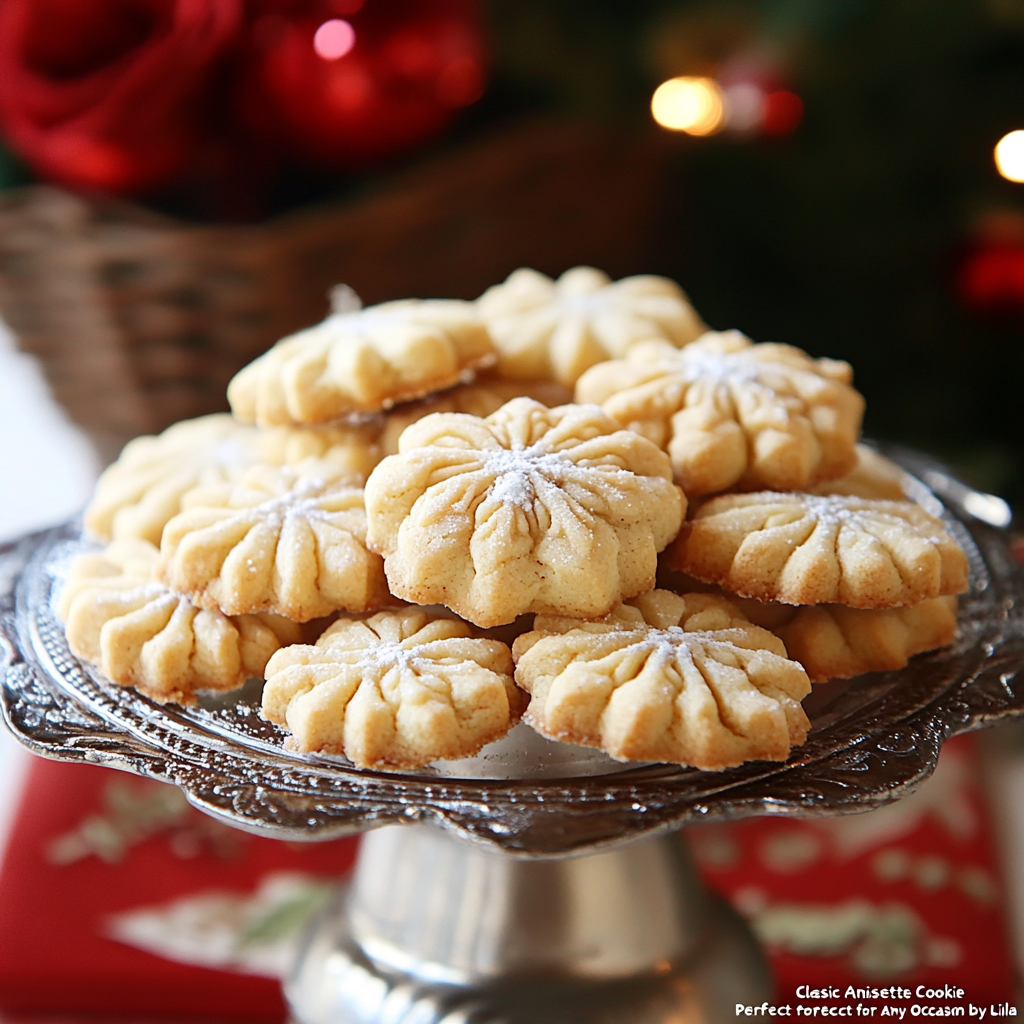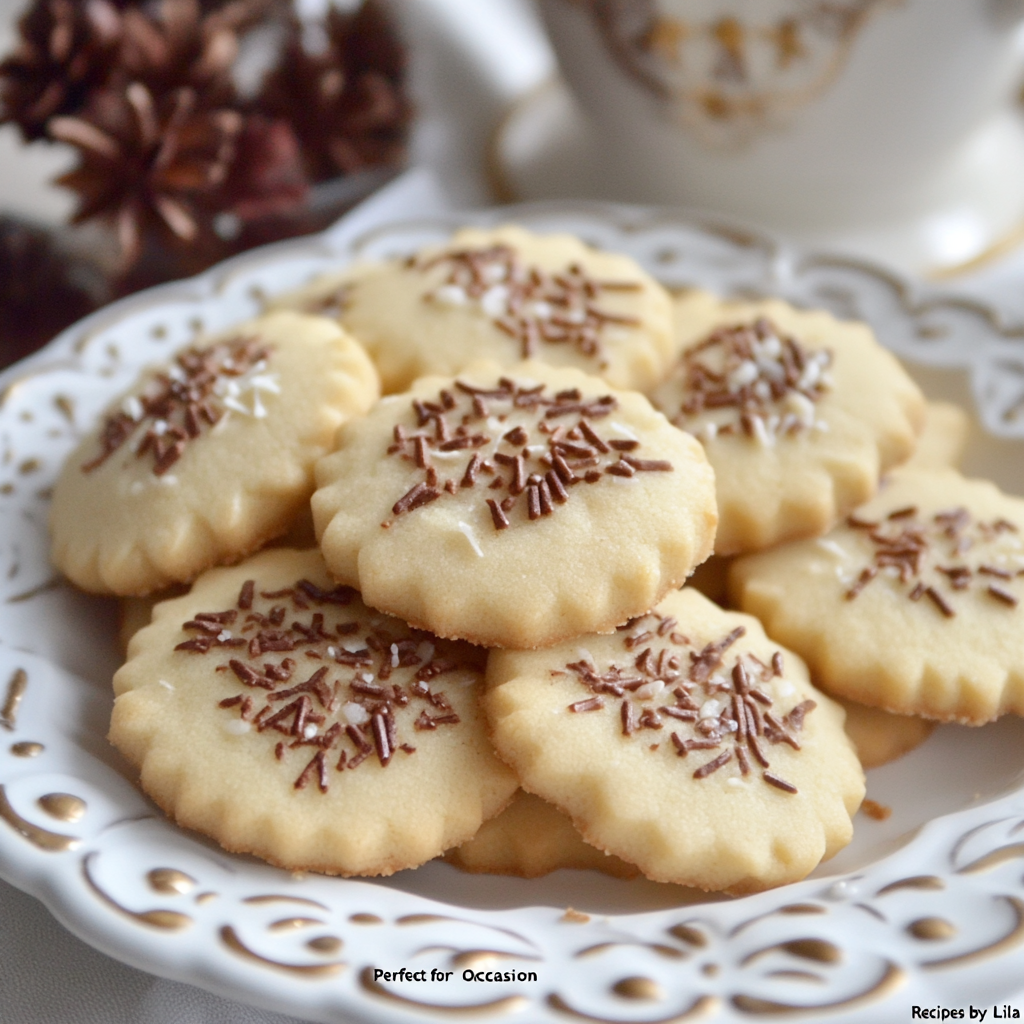
Ever smelled a freshly baked anise cookie and felt a deep connection? These treats, rooted in Italian heritage, have a licorice-like aroma. It’s as comforting as grandma’s kitchen. Whether it’s for holidays or a sweet craving, this guide will show you how to make authentic anise cookies or follow the italian anise cookies recipe passed down through generations. Let’s make your kitchen a place of discovery.
Imagine sharing these delicate, fragrant cookies with loved ones. They have crispy edges, soft centers, and a unique anise twist. This article will guide you through every step, from picking ingredients to perfecting the bake. By the end, you’ll see why these cookies are loved in Italy and American homes.
Key Takeaways
- Learn the history and cultural roots of anise cookies in Italian baking.
- Master the balance between anise flavor and texture in your homemade batches.
- Discover tips for adapting the italian anise cookies recipe to dietary preferences.
- Find out how to present cookies for holidays or everyday enjoyment.
- Gain troubleshooting advice to avoid common baking mistakes.

What Are Anise Cookies?
Anise cookies are a classic treat known for their unique licorice-like taste. They are often called anisette cookies. These small delights blend tradition and flavor, creating a baking experience rich in history. Exploring their origins and variations can deepen your appreciation for this anisette cookie recipe and its journey across cultures.
The Distinctive Anise Flavor Profile
Anise’s sweet, herbal notes come from essential oils like anethole. This gives the cookies their signature taste. Unlike fennel seeds, anise has a sharper, more complex aroma. This makes anise cookies instantly recognizable.
Bakers use either anise extract or ground seeds to infuse the dough. They balance sweetness with earthy undertones. This creates a unique flavor profile.
Cultural Significance of Anise in Baking
In Mediterranean countries like Italy, anise has been a staple since ancient times. These cookies symbolize celebration, often appearing at festivals or family gatherings. Traditional anisette cookie recipes reflect regional pride, with some recipes passed down through generations.
The herb’s association with good luck and health in folklore adds layers of meaning to every bite. It makes the cookies more than just a treat.
Regional Variations Across Italy and America
Italian anise cookies like biscotti all’anice often have crisp textures and minimal sugar. In the U.S., adaptations by Italian immigrants incorporated local ingredients. This led to softer textures and sometimes added butter.
Today, you’ll find versions shaped like coins in Sicily or rolled into balls in American bakeries. This shows how traditions evolve while staying rooted in heritage.
The History and Tradition of Italian Anise Cookies
Italian anise cookies have a long history, dating back centuries. They were baked for special occasions like religious feasts and family gatherings. The anise flavor brought joy and prosperity, as believed in ancient times.
In Italy, these cookies varied by region. Sicily’s were crisp and spiced, while the north’s were softer and nutty. This shows Italy’s rich cultural diversity. When Italians moved to the U.S. in the 1800s, they brought their cookie recipes with them. They adapted to American ingredients but kept their traditional taste.
Today, anise cookies bridge past and present. Families bake them for holidays like Christmas, making shapes like stars or crosses. In America, they’ve become a part of Italian-American culture. They’re often decorated with chocolate or sprinkles to appeal to modern tastes.
- Traditional Roles: Wedding favors, Easter table centerpieces, and Christmas stockings
- American Twist: Lighter textures, sometimes paired with citrus or vanilla
| Aspect | Traditional Italian Anise Cookies | American Adaptations |
|---|---|---|
| Primary Flavor | Pure anise extract | Blended with cinnamon or lemon zest |
| Occasion | Religious holidays, weddings | Year-round baking, gift-giving |
Every bite of these cookies tells a story. From medieval Italy to New York’s Little Italy. Baking your own anise cookies connects you to a tradition that values heritage and new flavors.
Essential Ingredients for Perfect Anise Cookies
Mastering the anisette cookie recipe begins with the right ingredients. We’ll cover what you need for delicious and authentic anise cookies.
Choosing the Right Anise Extract vs. Anise Oil
Anise extract and oil have different strengths. Use anise extract (like McCormick or Nielsen-Massey) for baking. It’s diluted for a balanced taste. Anise oil is strong; add just a drop or two to avoid too much flavor.
Always store oils in a cool, dark place. This helps keep their aroma fresh.
Flour, Sugar, and Other Base Ingredients
- Flour: All-purpose flour is key for the cookie’s structure. For gluten-free, try Bob’s Red Mill 1:1 gluten-free flour.
- Sugar: Granulated sugar sweetens and makes edges crisp. Brown sugar adds moisture and softness.
- Eggs: Use large eggs at room temperature for even mixing.
- Baking powder: Choose aluminum-free brands like Rumford for reliable leavening.
Optional Add-ins for Enhanced Flavor
Enhance your anise cookies with these subtle additions:
- Lemon zest: Brightens anise’s licorice notes without masking the flavor.
- Vanilla extract: Adds warmth that harmonizes with anise’s spiciness.
- Almond extract: Mimics traditional Italian recipes for a nutty depth.
Pro tip: Start with ¼ teaspoon of any add-in and adjust to taste. Overmixing can alter texture, so blend gently once add-ins are incorporated.
Kitchen Tools and Equipment You’ll Need
Before starting your italian anise cookies recipe, make sure you have these key tools. Even simple kitchen items can greatly affect your cookies’ texture and look.
- Mixing bowls: You’ll need at least two. Glass or stainless steel bowls are best for mixing dough and dry ingredients.
- Measuring cups and spoons: Being precise is important. Use spoons with level measurements to avoid over-spicing your cookies.
- Electric mixer: A hand mixer makes creaming butter and sugar faster. If you have a stand mixer, it works too.
- Baking sheets: Choose heavy-gauge pans to prevent burnt edges. Line them with parchment paper for easy cleanup.
- Cooling racks: Cool cookies here to avoid sogginess. Metal grids are the best choice.
Optional tools can make the process better. A cookie scoop helps make cookies the same size. Piping bags let you create fancy designs. Traditional Italian cookie molds add a touch of authenticity to your anise cookies.
“A good dough spatula is worth its weight in flour—it scrapes every last bit from bowls.”

If you don’t have special items, don’t worry. Use cookie cutters instead of molds. And a wooden spoon can replace an electric mixer. Preparing your space ahead of time makes baking smoother from start to finish.
Step-by-Step Anise Cookies Recipe
Turn your kitchen into a baking paradise with this detailed anisette cookie recipe. Follow these steps to make authentic italian anise cookies with ease.
Preparing the Cookie Dough
Begin by creaming softened unsalted butter with granulated sugar until it’s light and fluffy. Add anise extract and egg one at a time. Then, mix in flour, baking powder, and salt. The dough should stick together when squeezed—don’t overmix.
- Use room-temperature butter for smoother blending.
- Measure ingredients by weight for consistency.
- Add optional orange zest for extra brightness.
Shaping Your Cookies
Shape the dough into traditional forms:
- Drop Cookies: Scoop 1-tablespoon portions onto parchment-lined sheets.
- Roll & Slice: Chill dough, roll to ½-inch thickness, then cut with a round or fluted cutter.
- Twisted Shapes: Roll dough into ropes, twist two strands, and tuck ends.
Baking Time and Temperature Guidelines
| Temperature | Bake Time | Doneness Signs |
|---|---|---|
| 350°F (175°C) | 10–12 minutes | Edges golden, centers slightly soft |
Rotate pans halfway through baking for even browning. Avoid overbaking to keep them chewy.
Cooling and Storage Instructions
Let cookies cool on pans for 5 minutes before transferring to wire racks. Store in airtight containers:
- Room temperature: Up to 5 days
- Freezer-safe bags: 2–3 months (separate layers with parchment)
Reheat frozen cookies at 300°F (150°C) for 5 minutes before serving.
Icing and Decorating Your Anisette Cookies
After baking and cooling your anise cookies, it’s time to make them look amazing. The right glaze and decorations bring out the anise flavor. They also add texture and color. Here’s how to make your anisette cookies look stunning.
Classic Anise Glaze Recipe
Mix 1½ cups powdered sugar with 2–3 teaspoons milk and ½ teaspoon anise extract. Adjust the glaze’s thickness by adding more milk or sugar. Strain it for a smooth finish. Use a piping bag or spoon to cover the cookies evenly. Let them dry on parchment paper or a rack.
Festive Sprinkle and Decoration Ideas
- Seasonal Sprinkles: Use red and green sprinkles for Christmas or pastel colors for Easter.
- Traditional Nonpareils: Classic French nonpareils or rainbow jimmies give a traditional look.
- Modern Twists: Drizzle melted white chocolate over the glaze for a glossy look. Try edible gold leaf for special events.
Put decorations on right after glazing. Let them set at room temperature for 1–2 hours before serving. For extra style, shape the glaze into peaks with a toothpick before it hardens.
These decorations make simple anise cookies unforgettable. Try different colors and textures for any celebration. Keep the anise flavor the main attraction.
Troubleshooting Common Issues When Making Anise Cookies
Baking anise cookies can have its ups and downs. But, most problems are simple to solve. Let’s tackle the most common issues to make sure your italian anise cookies recipe is perfect every time.
- Spreading too much: If your dough spreads too much, check the butter’s temperature. Use butter that’s at room temperature, not melted. Adding a tablespoon of extra flour can help stiffen the dough.
- Too hard or dry: This problem often comes from overmixing or baking too long. Mix the dough just until it comes together, and set a timer to prevent overbaking. If needed, lower the oven temperature by 10°F.
- Lack of anise flavor: Old extract can lose its punch. Replace it with fresh extract and add a bit more, about ½ teaspoon. Letting the cookies rest overnight can enhance the flavor.
- Cracked tops: Dry dough can cause cracks during baking. Add a little milk or egg yolk to moisten it. Mix gently to avoid overworking the dough.
Humidity and altitude can also impact your baking. At high altitudes, reduce the baking powder a bit and bake for 5-7 minutes less. In humid areas, sift the flour twice before mixing. Always test the dough by making a small batch first.
By making these adjustments, your italian anise cookies recipe can adapt to any situation. Remember, even small changes can make a big difference. Happy baking!
Variations on the Traditional Italian Anise Cookies Recipe
Want to make your italian anise cookies recipe your own? Try these creative twists. They keep the anise flavor but add something new. You can add citrus or make them gluten-free, keeping the classic taste but with a special touch.
Lemon-Anise Cookies
Give your cookies a zesty twist with lemon. Mix in 1 tablespoon lemon zest and 1 teaspoon lemon juice. Start with ½ teaspoon anise for a lighter flavor. Bake at 325°F for 12–15 minutes.
The lemon adds a bright note that balances the anise. It’s perfect for spring or summer.
Chocolate-Dipped Anise Cookies
Take your anisette cookie recipe to the next level with chocolate. Dip cooled cookies in melted dark, milk, or white chocolate. For a crisp finish, chill them on parchment.
Dark chocolate’s bitterness pairs well with anise’s warmth. Milk chocolate adds a creamy touch.
Gluten-Free Anise Cookie Options
Make your cookies gluten-free with Bob’s Red Mill 1:1 or King Arthur Measure for Measure. Replace 1 cup all-purpose flour with the blend and add ½ teaspoon xanthan gum. This helps them keep their texture.
Bake for 5 minutes less to avoid dryness. These italian anise cookies recipe versions are just as delicious without gluten.
Conclusion
Anise cookies bring warmth and tradition into today’s kitchens. The anisette cookie recipe makes this classic treat easy for everyone to make. They add a special touch to any event, from holidays to casual get-togethers.
Trying different flavors like chocolate or citrus makes these cookies even more special. They’re perfect for sharing with loved ones or enjoying on a cozy day. The joy of making them is just as important as the taste.
Remember, anise cookies are a way to celebrate your heritage and share moments with others. They’re perfect for family dinners or as gifts to neighbors. So, get ready to make your own batch and let tradition guide your baking. Your next batch of anise cookies is waiting to become part of your story.
FAQ
What are anise cookies?
Anise cookies are tasty treats with a unique flavor. They taste like licorice. These cookies are a big part of Italian baking and are loved during holidays.
How do I make anisette cookies?
Making anisette cookies starts with mixing flour, sugar, butter, eggs, and anise extract. You shape the dough into cookies and bake them until they’re golden. For a detailed recipe, check out the guide provided.
What is the difference between anise extract and anise oil?
Anise extract is less strong and comes from the plant’s seeds. Anise oil is more concentrated and made through steam distillation. Use extract for a milder taste and oil for a stronger one.
Can I make gluten-free anise cookies?
Yes, you can make gluten-free anise cookies. Use gluten-free flour blends and add xanthan gum for texture. Follow the flour blend’s instructions for measurements.
What are some popular variations of Italian anise cookies?
Popular variations include lemon-anise cookies and chocolate-dipped anise cookies. These add a twist to the traditional recipe. They keep the essential flavor but offer a new taste.
How should I store my anise cookies?
Cool your anise cookies completely on a wire rack. Store them in an airtight container at room temperature. For longer storage, freeze them well-wrapped to avoid freezer burn.
What occasions are best for serving anise cookies?
Anise cookies are perfect for holidays, family gatherings, and coffee with friends. Their flavor and festive look make them great gifts too.
Why do my cookies spread out too much while baking?
Cookies spreading can happen if butter is too warm or there’s not enough flour. Keep ingredients at the right temperature and follow the recipe’s measurements.




